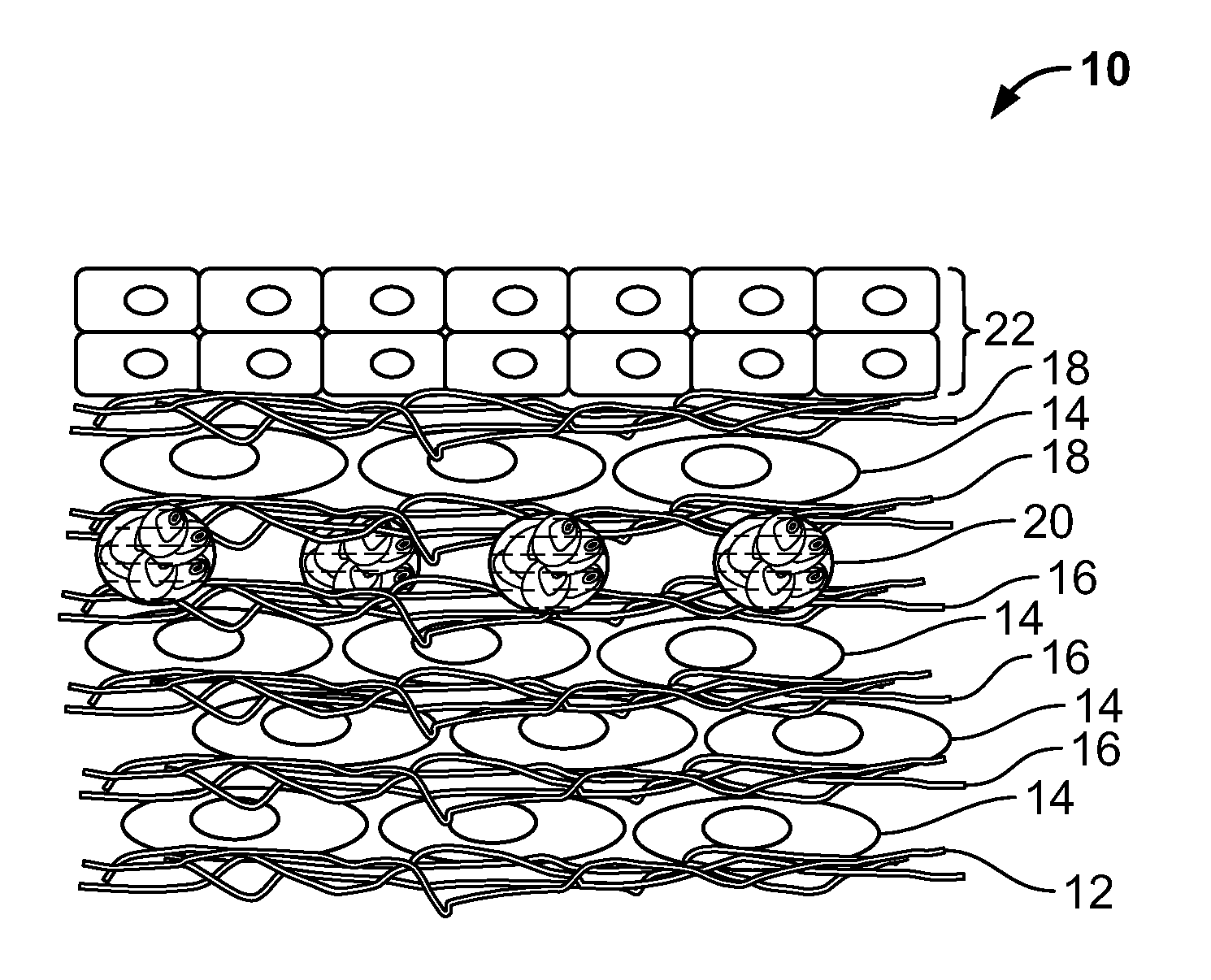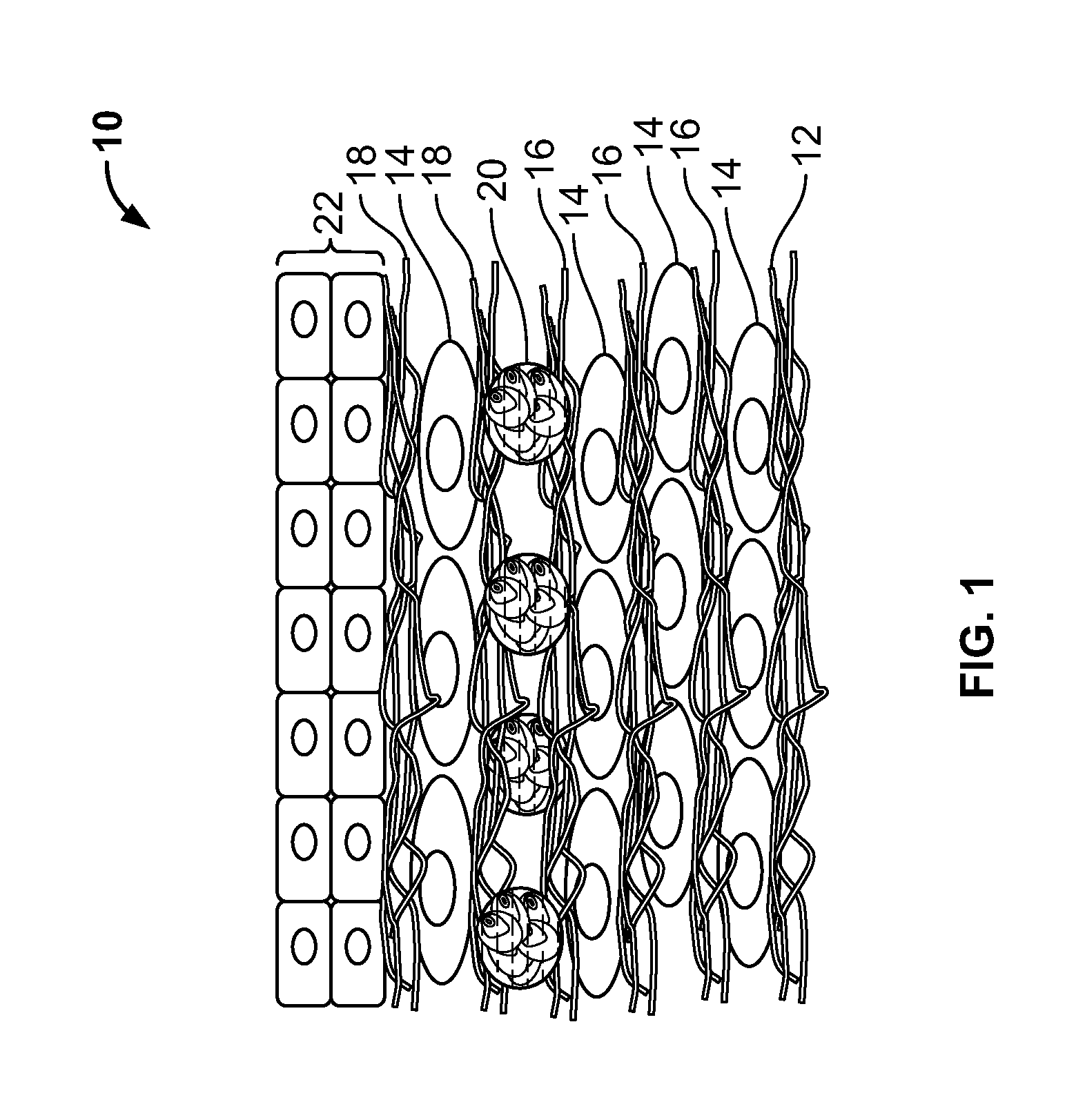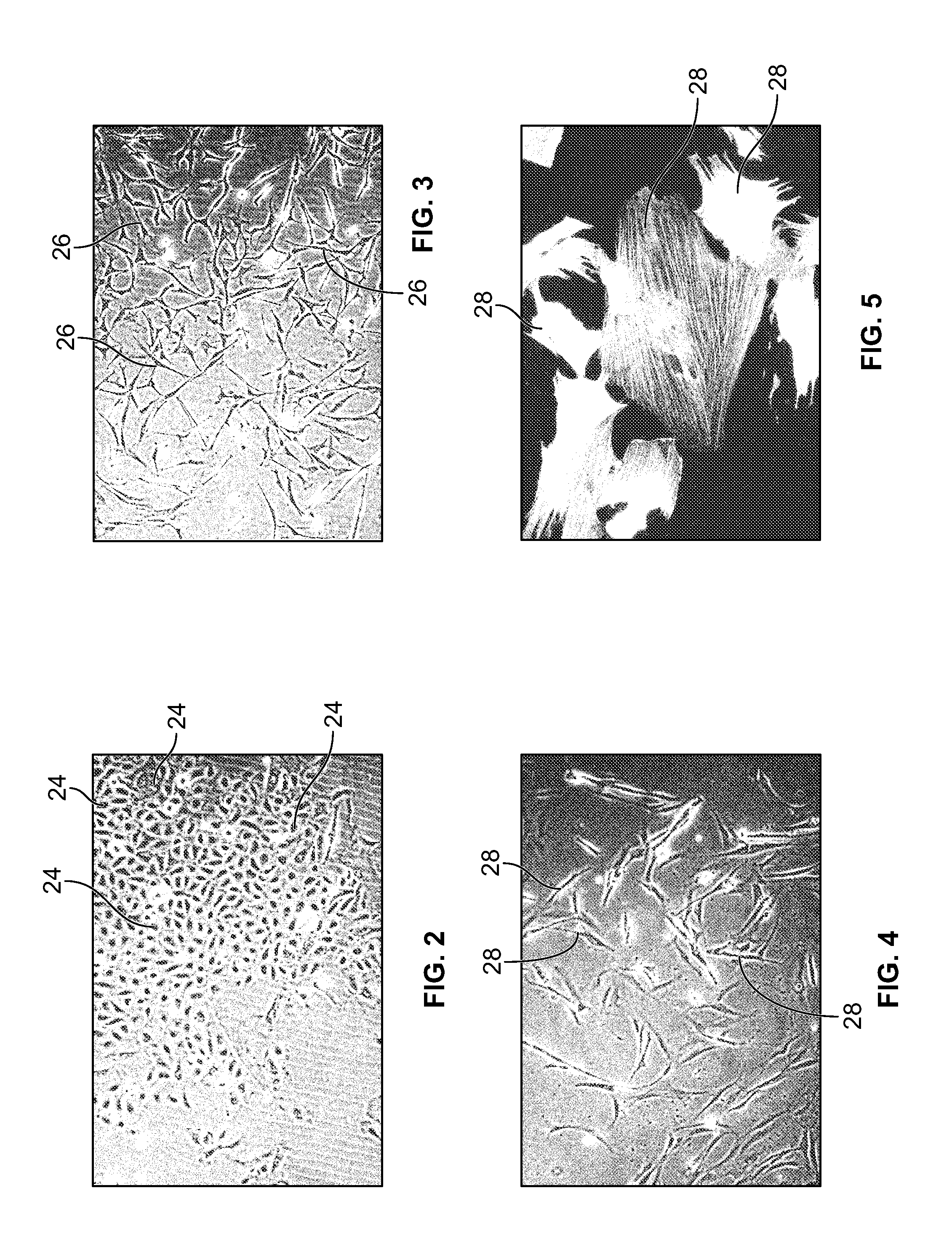Creation of hair follicles in tissue-engineered skin grafts
a skin graft and tissue-engineered technology, applied in the direction of prosthesis, skeletal/connective tissue cells, drug compositions, etc., can solve the problems of affecting the self-esteem of individuals, not only failing to provide the necessary physiologic protection of skin, but also lacking hair in healed wounds
- Summary
- Abstract
- Description
- Claims
- Application Information
AI Technical Summary
Benefits of technology
Problems solved by technology
Method used
Image
Examples
example 1
[0035]The present Example 1 employs steps 1-3 of the exemplary method discussed above with respect to an embodiment of the present embodiment to construct an exemplary skin graft, such as skin graft 10 of FIG. 1. The skin graft itself is also discussed hereinbelow.
Step 1: Isolation of Skin and Hair Follicle-Forming Cells.
[0036]Enzymatic dissociation methods employing collagenase I and dispase II were optimized and established for obtaining keratinocytes from skin epidermis and DP cells from vibrissa hair follicles of the same female pregnant Sprague Dawley rat. To circumvent the relatively low yield and limited proliferation capacity of fibroblasts isolated from rat skin, fibroblasts were isolated from a fetus of the same female rat. FIGS. 1-3 show the typical morphology of all three types of cells: keratinocytes 24, which are positive for “keratin 14” (“K14”) (FIG. 1), fibroblasts 26, which are positive for vimentin (FIG. 2), and DP cells 28, (FIG. 3), which are positive for α-smoo...
PUM
 Login to View More
Login to View More Abstract
Description
Claims
Application Information
 Login to View More
Login to View More - R&D
- Intellectual Property
- Life Sciences
- Materials
- Tech Scout
- Unparalleled Data Quality
- Higher Quality Content
- 60% Fewer Hallucinations
Browse by: Latest US Patents, China's latest patents, Technical Efficacy Thesaurus, Application Domain, Technology Topic, Popular Technical Reports.
© 2025 PatSnap. All rights reserved.Legal|Privacy policy|Modern Slavery Act Transparency Statement|Sitemap|About US| Contact US: help@patsnap.com



